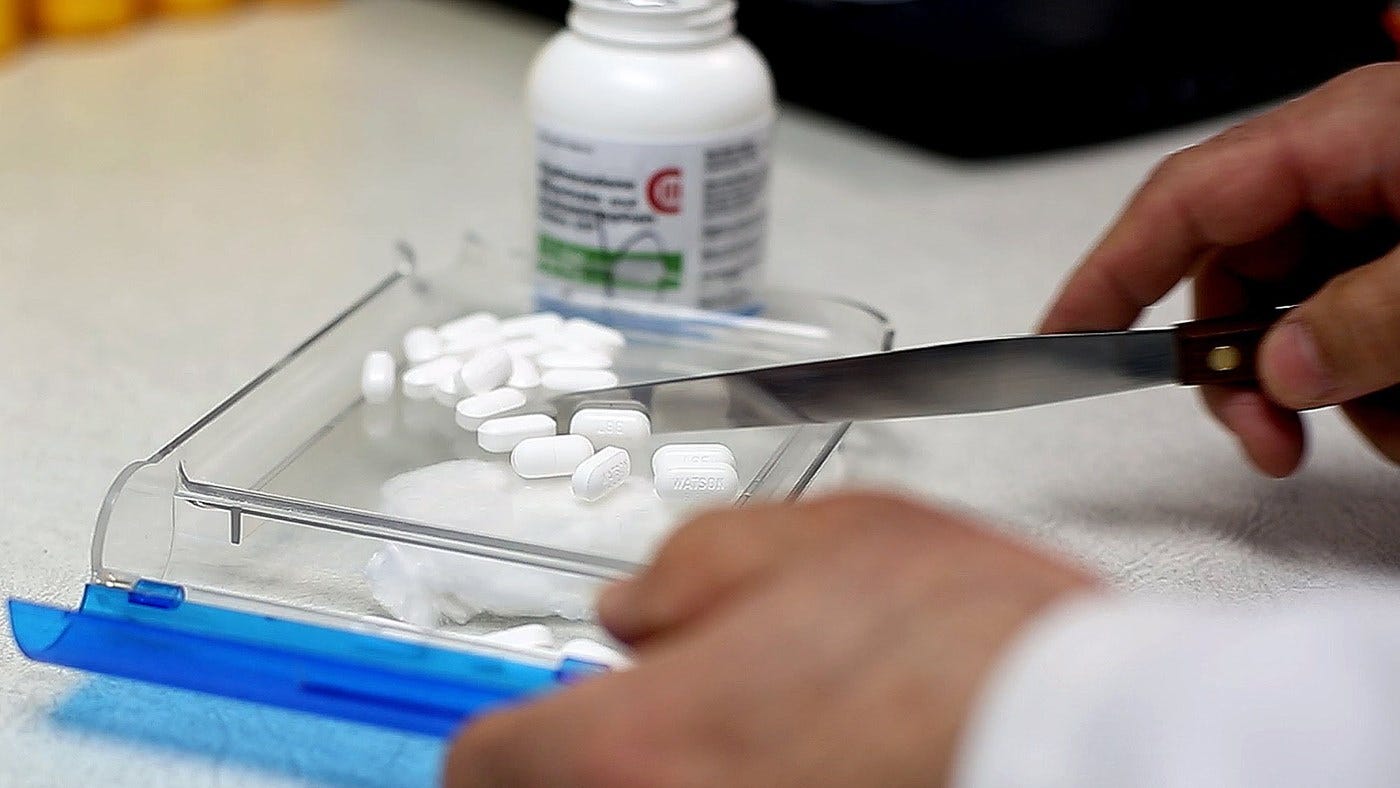Private Industry Takes Aim at Painkiller Epidemic
 Indiana doctors were the ninth-highest opioid prescribers in the nation in 2012.
Indiana doctors were the ninth-highest opioid prescribers in the nation in 2012.
Subscriber Benefit
As a subscriber you can listen to articles at work, in the car, or while you work out. Subscribe NowIndiana isn’t the only state with a prescription painkiller problem, but it is among those with a drug poisoning death rate that’s climbing faster than the national average, which is also on the rise. The Indiana State Department of Health (ISDH) says between 1999 and 2009, there was a 500 percent increase in the rate of unintentional poisoning deaths in the state, largely due to the growing misuse of prescription painkillers. As evidenced by an HIV outbreak in a southern Indiana community, state health leaders say the issue has reached an epidemic level—a public health problem the private industry is now helping to battle.
“In terms of the number of people using these substances illicitly, the number of overdose deaths, the number of hospital admissions—we’re not seeing declines,” says ISDH Chief Medical Officer Dr. Joan Duwve.
It was the topic of a recent BioCrossroads Frameworx session, which led conversation on how Indiana’s health care and life sciences companies are responding to the crisis. State health leaders say opioids are more widely prescribed in Indiana than other states—making them more available and easier to abuse. Indiana doctors were the ninth-highest opioid prescribers in the nation in 2012, writing 109 painkiller prescriptions for every 100 people in the state.
The state tracks every controlled substance that is dispensed through Indiana’s Prescription Drug Monitoring Program (INSPECT), a state-developed tool that helps doctors monitor opioid prescribing in their patients. However, public health leaders acknowledge doctors are struggling to keep pace with adhering to local and state prescribing rules, monitoring patients and identifying misuse, so private industry is stepping in.
Given Indiana’s high level of painkillers being prescribed, Indianapolis-based AIT Laboratories is aiming to help doctors make prescribing decisions with its new software program called GuideMed. By outsourcing the painkiller monitoring process to a third party, AIT says health care providers can focus on patient care.
GuideMed nurses who work for AIT are put in the clinic or health care facility to spearhead the monitoring process. The nurses use the proprietary software to complete the many tasks prescribers often struggle to stay on top of: patient risk assessments, Prescription Drug Monitoring Programs (PDMPs), “Pill Counts” to assure the patient is taking the medicine as prescribed and toxicology testing such as urine drug analysis.
AIT Laboratories Chairman, President and Chief Executive Officer R. Matthew Neff says the program is customizable, so providers can choose for GuideMed to complete all of the tasks or just a select few.
“When the doctor goes in to see that patient, [the nurse] hands them a GuideMed report—a one-page sheet that says this patient has been screened, everything has been done, you’re good to go,” says Neff. “If there’s something out of order, we flag it for the doctor, and say, ‘these are the things you should do to drill down on this problem. There’s an aberrancy here you need to understand to help this patient avoid the risk of becoming addicted to opioids.’”
AIT piloted GuideMed with Community Health Network last year, and the health care system recently expanded its use from five sites to 21 throughout the state. While health care providers must pay for the service, Neff says it’s a cost that helps manage risk; AIT is hopeful, over time, it will become a reimbursed program.
“This is a problem for Indiana; we want to be a partner,” says Neff. “We went to Scott County, and we’ve gone to other counties where there are medical emergencies and said… ‘We’ll let you use [GuideMed] at no charge or reduced charge. Use it to help get on top of the problem.’”
Scott County is a poignant illustration of the desperate need for opioid management, where health officials say shared needles among injection drug users—shooting the opioid Opana—are the cause of the HIV outbreak. Earlier in the outbreak, ISDH reported nearly half of the people who were HIV positive live within a half-mile square area. The latest ISDH numbers show 189 people have now tested positive for HIV.
“This opioid epidemic is hallowing out small communities and rural communities,” says Neff. “It’s a scary thing, and it’s our role as a corporate citizen to try to contribute to the solution for the problem.”
Neff says AIT piloted GuideMed with Community Health Network in 2015.
Neff says, because so many factors are involved in managing opioid misuse, it’s virtually impossible for doctors to monitor patients without some kind of automation, such as GuideMed.
Duwve says a pilot project at the former Wishard Hospital in Indianapolis that integrated Indiana’s prescription drug monitoring program with electronic health records produced great results.
